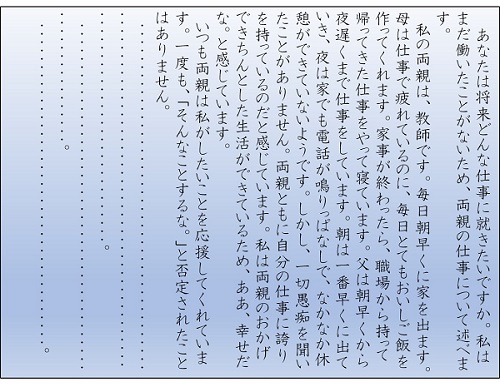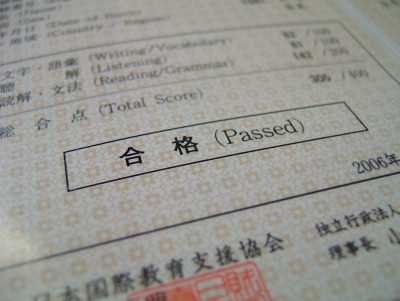JLPT N5 measures the level of understanding of basic Japanese. Among the five (N1, N2 N3, N4, N5), the N5 level of the Japanese Language Proficiency Test is the easiest.
Although passing this level is not that useful for getting employment opportunities abroad in Japan, it inspires you to advance your Japanese skills to a higher level.
So, how to ace the JLPT N5 exam? Fortunately, there are few things to help you make that possible.
6 Ways for JLPT N5 Exam Success!
1. Time is a factor
The test schedule is twice a year so you can take the test either in July or in December. Now you have enough time to study, but it will definitely depend on your availability and learning capability. Remember, learning a new language needs time and effort. Therefore, use your time wisely and study hard if you want to have good results. For the schedules, please click here.
2. Study Aides
Some gained their knowledge by studying in schools that offer the Japanese language curriculum. Some prefer learning Nihongo online.
Any of the choices is the best, but it all depends on you. Whatever the means, study aides are necessary. Here are some of the best study aids that you should consider.
-
- The official website of JLPT officially released two official practice workbooks for aspiring test takers. Two volumes were released in 2012 and 2018 simultaneously. Though these workbooks are for sale, each contains questions with almost the same number used in tests since 2010. For more information, visit the JLPT official website.
- Genki I is the most regarded textbook in learning the Japanese language. This book covers writing, listening, speaking, and reading to help you learn the overall language ability. This also includes the CD which contains the mp3 format to be used in your listening comprehension. This item can be purchased in either the Japanese or English version.
- Another website that offers you to learn the language in the fastest, easiest, and most fun way is Japanesepod101. The is not for free but offers free help.
3. Learn the contents of the test
The test consists of two sections, the Reading and Listening Sections. Preparation is a must especially you have to familiarize the basic vocabularies, the kanas, kanjis and know the accurate grammar.
Reading Section:
You need to know how to read and write the hiragana and the katakana. Be careful on the spelling of each word for some words have two different meanings. For example, ichi means the number one but sometimes, it means location. Some characters are very confusing such as the katakana of shi(シ) and tsu(ツ), and so(ソ) and n(ン). In this area, you need to distinguish the difference between the two. Loan words are also critical. Loan words are usually written in katakana. For example, the word workman is written as ワークマン.
The next thing you need to be careful about is the grammar. The structure is very simple when it comes to short sentences but it gets complicated when it comes to long sentences. On the internet, there are vast sites offering you help with grammar guides. You can visit these sites such as the Japanese Grammar Guide.
Listening Section:
This section is very hard for most people. That is why concentration and memory play a very large role in this section. The JLPT N5 usually uses conversations and asks rhetorical questions. Some questions consist of situations and want you to answer with the right response. For practice, just keep listening to audio files even though you cannot understand and try to research for the words you can clearly hear. Somehow, you can understand the thought of the sentence. There are also sites that offer you to learn the listening ability.
4. Consider some helpful tips to ace the JLPT N5.
- Familiarize words one by one. You do not have to memorize all vocabulary in one day. You have the most time to prepare. Relax your mind while learning at least 800 vocabularies. In memorizing, start from the basic ones to harder ones. For example, the words we usually use in our daily living. I, you, we, he, she, and they. Next are the verbs we usually use such as eat, drink, work, sleep, and talk. Next will be the things and places we are familiar such as phones, hospitals, schools, and chairs. To be more efficient, try to memorize at least 10 words a day. I recommend using the book, “Minna no Nihongo”. This book lists a group of words per lesson.
- Watch movies, series, or anime without subtitles. Though some actor’s lines are spoken very fast or have complex grammar, this will help you cultivate your listening ability and your vocabulary.
- Try to use your learned words in your daily living. For example, when you want to eat, say “Gohan wo tabetai desu. (ごはん を たべたい です。)
- Converse with a Japanese person or try to attend language meet-ups. This will really help improve your speaking ability. Though the test will not include writing and speaking, practicing how to converse will help your mind process the vocabulary really fast.
- Memorize the writing system immediately for the test will be in hiragana and katakana entirely. Write as many charts as you can. You can also set your phone’s wallpaper to a katakana or a hiragana chart. This way, you cannot forget the characters. For instance, you can also set your phone language to Nihongo.
- Study only what is needed. Although the official site doesn’t release an official list of vocabularies and kanjis to focus on, JLPT N5 focuses on the basics so you can also focus on learning the 800+ vocabulary words, 120+ grammar points, and 100 kanji.
 Study the forms of the verbs and adjectives. This is very complicated because a verb used in a sentence depends on the time or the use of the verb. For example, tabemasu in the past form will become tebamashita or tabemasen deshita in the past negative form. Work on basic sentence structures and always use the formal form.
Study the forms of the verbs and adjectives. This is very complicated because a verb used in a sentence depends on the time or the use of the verb. For example, tabemasu in the past form will become tebamashita or tabemasen deshita in the past negative form. Work on basic sentence structures and always use the formal form.- Download applications that deal with JLPT. There are flashcard applications available on the app store. Always test your knowledge.
- Read books, magazines or papers written in the Japanese language such as Japanese Manga. Know your limits of how many words you know. You can then surpass these limits.
5. Dedication to learning the Japanese language.
Dedication is the key. Learning a foreign language is not that easy, spending more time learning Japanese is very helpful.
In studying the language, you can spend one to three hours. For listening, you can spend your leisure time playing videos or mp3 formats conversations. It never hurts having a wide range of vocabulary. If you are really interested in a language, you will learn every corner of it. Write about what you recently learned. Review what you have learned the other day.
Don’t just focus on the reading section or have more time in the listening section. Learn them side by side.
6. Study in a Japanese language school.
Studying in a Japanese language school in Japan rather than taking it in their home country because they considered learning could be at best if they can practice it right away. Of course, you will be talking with the locals every day, and for sure will help you improve your Japanese skills. If you also think that learning Japanese in Japan could be helpful, then why not apply with us FAIR Inc. We would be glad to assist you.
JLPT N5 is the first level. If you pursue passing the other 4 levels, more determination, concentration, time, and hard work are needed. For now, just focus on the N5. If you have the discipline to apply the tips given to you, the JLPT N5 will be really easy for you.
Learning another language can be very easy if you have the right tools and a good mindset. Do your best and never surrender. ( 諦めないで)
FAIR Study provides useful information about Japan.





No comments yet.